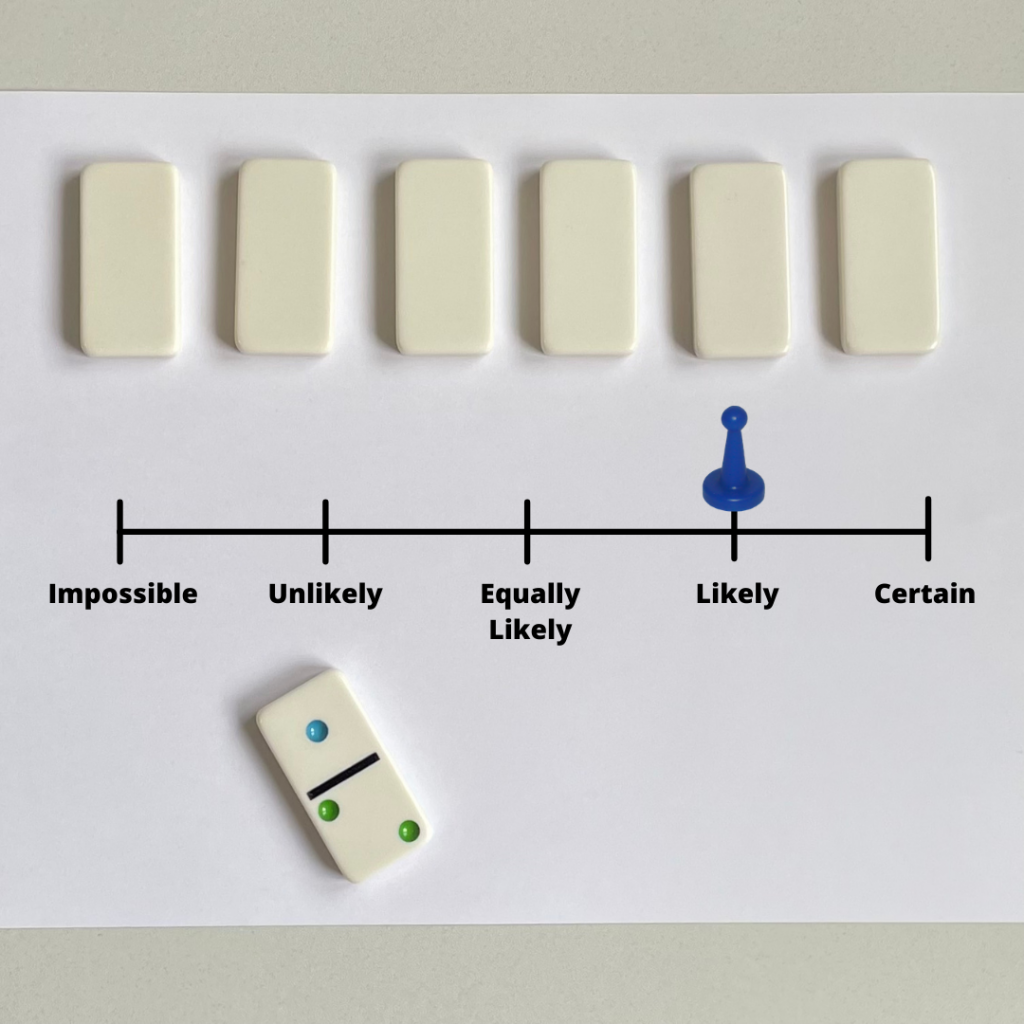Odds
Junior (Age 9 – 12)
Curriculum Goal
Junior: Data Management
- Use mathematical language, including the terms “impossible”, “unlikely”, “equally likely”, “likely”, and “certain”, to describe the likelihood of events happening, represent this likelihood on a probability line, and use it to make predictions and informed decisions.
Context
- Small groups of two to five students.
- Students should have previous experience using probability terminology and plotting the likelihood of an event on a probability line.
Materials
In-person version
- Probability line for each student (Appendix A)
- Game piece for each student (e.g., small coin, figurine)
- 28-piece set (double-six set) of dominos for each small group (Appendix B)
Online version
- On Playingcards.io
- Video conference capabilities
Lesson
- To start, each player is dealt one domino. The sum of the dots on the domino is their starting number.
- All other dominoes should be face-down in front of the players to hide their quantity.
- On each players turn, the player will predict whether the sum of the dots on the domino drawn from the deck will be greater than, less than, or equal to the sum of their starting number.
- While making their prediction, the player will move their game piece on the probability line to reflect their choice.
- Once their prediction has been made, the player will flip over a new domino. If their prediction was correct, they will keep the domino and it becomes the new reference number for their next turn.
- Students who predict correctly can choose to take another turn or to pass.
- If the student’s prediction is incorrect, they must put the domino in the discard pile, and it becomes the next player’s turn.
- Players continue taking turns until all the dominos are either in a player’s hand or in the discard pile.
- The player who collected the most dominos wins.

Look Fors
- Can students explain their reasoning behind where they placed their game piece on the probability line?
- Are students using probability vocabulary?
- Do students’ predictions make logical sense based on the dominos they’re playing with?
- What strategies do students use to make decisions during the game (e.g., keeping track of which dominos have been revealed, understanding the likelihood of pulling a greater number based on their starting number)?
Extension
- Students create their own probability lines.
- Prior to beginning the game, students find the probability of drawing each quantity from the deck. Students then represent the likelihood as a fraction, decimal, or percent.
- Introduce probability lines that include numerical representation in fractions, decimals, or precents.
- Students can multiply the dots on the dominos and use the product as their reference number.
- Students can use the dots on the dominos to represent fractions.
Created by Tajuana Payne. Adapted by The Robertson Program.
Share this lesson
Share on facebook
Share on twitter
Share on email
